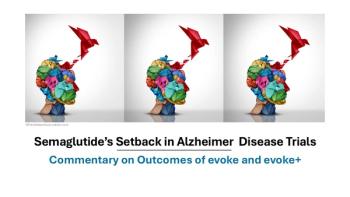
Temporal Arteritis in a 60-Year-Old Man
A 60-year-old man has had anterior neck discomfort for the pastseveral weeks. He also has right-sided cephalalgia and occasional jaw discomfortwhile eating but no dysphagia or odynophagia. The cephalalgia, which hasbeen present for the past week, is moderately severe and is associated withblurred vision.
THE CASE:
A 60-year-old man has had anterior neck discomfort for the pastseveral weeks. He also has right-sided cephalalgia and occasional jaw discomfortwhile eating but no dysphagia or odynophagia. The cephalalgia, which hasbeen present for the past week, is moderately severe and is associated withblurred vision.What do you suspect as you evaluate this patient?
- Glaucoma
- Migraine
- Temporal arteritis
- Central retinal artery occlusion
DISCUSSION:
This patient has
temporal arteritis,
a generalizedvasculopathy that affects the mediumand large arteries. His erythrocytesedimentation rate (ESR) was elevatedat 80 mm/h, Westergren method;the results of a biopsy of the temporalartery confirmed the diagnosis.Consider temporal arteritis inany patient older than 50 years whocomplains of unilateral headache. Althoughnot specific to this disorder,headache is present in more than85% of patients with temporal arteritis.The headache is usually localized tothe temporal region. It worsens graduallyfor several days and frequentlyis more severe at night. A burning orjabbing sensation may be felt over thescalp and face.Associated symptoms may includeimpaired vision, which occurs in50% of patients and is sometimes theinitial complaint. The visual disturbance may be either transientor permanent. Blindness in the affected eye may occurin 20% to 50% of untreated patients; in up to 75% of these, theblindness will be bilateral. About 65% of patients experiencejaw claudication; constitutional symptoms--such as weightloss, fever, anorexia, and fatigue--are often reported.The temporal artery may be tender on palpation, andthe scalp may be exquisitely tender. Visual acuity and fielddefects may be present.Temporal arteritis preferentially affects patients olderthan 50 years, women (female-to-male ratio, 4 to 6:1), andpersons of northern European descent. An ESR higherthan 50 mm/h is suggestive, but the definitive diagnosisis made by temporal artery biopsy, which often demonstratesskip lesions attributable to the segmental nature ofthe disease process.Oral corticosteroids are the recommended therapy.Patients may require hospital admission for further evaluationand treatment.
Ruling out other entities.
Patients with
acute angleclosureglaucoma
often present with unilateral severeheadache and ocular pain of acute onset that is associatedwith visual alterations, such as decreased acuity, coloredhalos around lights, and complete loss of vision. Nauseaand vomiting may occur. Eye examination typically revealsa dilated, poorly reacting pupil; corneal clouding; and anarrow anterior chamber.
Migraine
headaches--characterized by unilateralhead pain--are frequently associated with ocular pain, visualdisturbances, and constitutional symptoms (eg, anorexia,nausea, vomiting, and photophobia). Often there isa family history of migraine. Although this disorder maybegin at any age, onset is usually between the ages of 10and 30 years. Migraine is more common in women andoften resolves after age 50 years.Patients with
central retinal artery occlusion
experiencesudden, painless unilateral blindness. This conditionresults from either an embolism or thrombosis in a scleroticcentral artery. The pupil is dilated and respondspoorly to light but constricts when the other eye is illuminated.Examination of the fundus reveals a pale retinawith a bright red fovea ("cherry red spot").
References:
FOR MORE INFORMATION:
- Edmeads J. Headaches in older people: how are they different in this agegroup?Postgrad Med. 1997;101:91-94, 98-100.
- Hunder GG. Giant cell arteritis and polymyalgia rheumatica. Med Clin NorthAm. 1997;81:195-219.
Newsletter
Enhance your clinical practice with the Patient Care newsletter, offering the latest evidence-based guidelines, diagnostic insights, and treatment strategies for primary care physicians.
















































































































































































































































































